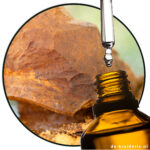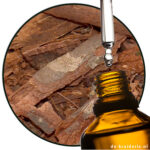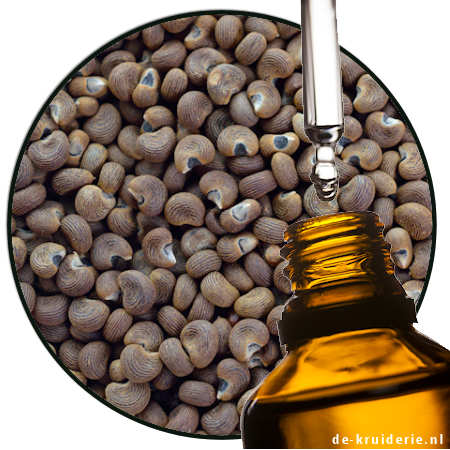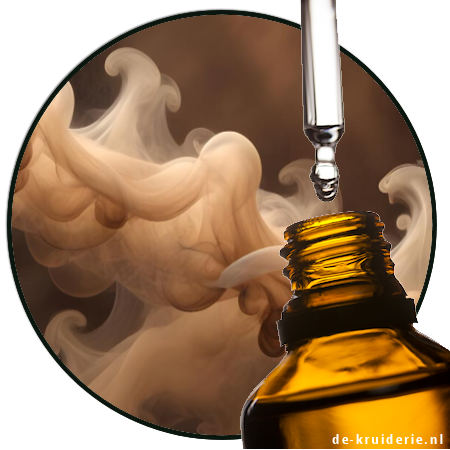

Ambrette seed (EO)
Botanical name: Abelmoschus moschatus Medik / Hibiscus abelmoschus
Pure essential oil
Fragrance group : ambery
Fragrance Description : An enchanting, musky fragrance with sweet, floral undertones; warm, rich and slightly earthy, with nuances of ambergris; a natural, animalic musk note. The aroma is deeply complex and seductive, evoking a sense of sensuality and elegance.
Extraction method : steam distillation of the seeds
Fragrance strength : strong
Fragrance duration : 330 hours
IFRA Limit (Cat. 4) : none
CAS: 8015-62-1
Synonyms : Abelmoschus moschatus seed oil
1st Class Quality Products
All fragrances are selected with care
Delivery from stock
We supply everything from our own stock, unless otherwise stated on the product itself.
Ambrette seed essential oil has a captivating scent profile that is often described as musky, floral, and slightly woody.
It carries warm and sweet undertones.In perfumery, ambrette seed oil is highly valued for its ability to act as a fixative and enhance the longevity of fragrances.
It is often used as a base note and blends beautifully with other oils like jasmine, rose, sandalwood, and patchouli.
Its natural musk-like aroma makes it an excellent plant-based alternative to animal musk.Scent Profile:
Ambrette seed oil has a sweet, rich, floral-musky aroma with fruity undertones. It also carries sensual, tobacco, and leather notes, along with woody and earthy undertones.
The oil’s scent improves with aging, developing a smoother and more refined profile.Use in Perfumery:
Ambrette seed oil is highly valued in perfumery for its:
- Musk-like aroma: It serves as a botanical alternative to animal musk.
- Fixative properties: Enhances the longevity and stability of fragrances.
- Versatility: Complements floral, powdery, amber, and woody notes, making it suitable for exotic, oriental, and masculine blends.
Blending suggestions:
With Other Essential Oils
- Floral Notes:
- Pairs beautifully with jasmine, neroli, rose, and ylang-ylang to enhance its sweet and sensual musky undertones.
- Citrus Notes:
- Blends well with bergamot, mandarin, and sweet orange to add brightness and balance to the richness of the musky scent.
- Woody Notes:
- Cedarwood, sandalwood, and vetiver complement ambrette’s earthy and woody facets.
- Spicy Notes:
- Adds sophistication when paired with cardamom, clove, or nutmeg, creating exotic and warm blends.
With Aromachemicals
- Musk Substitutes:
- Ambrette is already a botanical musk, but combining it with synthetic musks like galaxolide or muscenone can amplify its longevity and impact.
- Sweet Notes:
- Add ethyl maltol or vanillin to emphasize its creamy, sweet, and slightly nutty aspects.
- Amber Notes:
- Blending with ambergris alternatives or materials like Ambroxan enhances the warmth and depth of the fragrance.
- Green Notes:
- Use cis-3-Hexenyl acetate for a fresh, leafy twist that contrasts nicely with ambrette’s sensuality.
Some popular fragrances featuring ambrette seed:
- Chanel No. 18: Ambrette takes center stage, providing a refined musk note that blends beautifully with soft florals.
- Le Labo Santal 33: Ambrette enhances the woody character of this iconic fragrance.
- Jo Malone Mimosa & Cardamom: Ambrette adds a warm, musky layer, balancing the brightness of mimosa and the spice of cardamom.
- Diptyque Fleur de Peau: Known for its delicate and ethereal use of ambrette seed.
- Tom Ford White Patchouli: Ambrette contributes to its musky and medicinal undertones.
Main Components:
– Farnesyl acetate
– Decyl acetate
– Dodecyl actate
– Farnesyl propionate
– Nerolidol
– Farnesol











